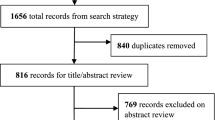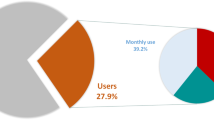Abstract
Purpose: Twitter has become a powerful tool for professional development in academia. However, studies from the general population suggest that racialized and gender biases disproportionately empower male and white users. We characterized the demographics of Twitter influencers in Canadian healthcare. Methods: We used the Right Relevance Insight API algorithm to identify Twitter influencers in the healthcare, healthcare research, and health policy domains, and to generated normalized influencer scores based on user connections and engagement. We used facial recognition software to approximate the influencers’ race and sex. Results: The majority of influencers identified were white (84%) and/or male (60%). Males had significantly higher influencer scores than females (65.1 ± 8.0 vs. 61.2 ± 6.2, P < 0.05) in health policy. We did not identify any sex- or race-associated disparities among influencers in healthcare or healthcare research. Conclusion: Male users have significantly higher levels of influence in health policy on Twitter. Given the importance of Twitter as a tool for professional development, it is crucial that institutional leaders and policymakers are aware of potential inequities in user reach. Future studies should evaluate additional factors shaping user influence in healthcare on Twitter, with a focus on equity, diversity, and trustworthiness.
Similar content being viewed by others
References
Choo EK, Ranney ML, Chan TM, Trueger NS, Walsh AE, Tegtmeyer K, et al. Twitter as a tool for communication and knowledge exchange in academic medicine: A guide for skeptics and novices. Med Teach [Internet]. 2015;37(5):411–6. Available from: https://doi.org/10.3109/0142159X.2014.993371
Lewis JD, Fane KE, Ingraham AM, Khan A, Mills AM, Pitt SC, et al. Expanding Opportunities for Professional Development: Utilization of Twitter by Early Career Women in Academic Medicine and Science. JMIR Med Educ [Internet]. 2018;4(2):e11140. Available from: http://mededu.jmir.org/2018/2/e11140/
Messias J, Vikatos P, Benevenuto F. White, Man, and Highly Followed: Gender and Race Inequalities in Twitter. arXiv e-prints. 2017;arXiv:1706.08619.
Mislove A, Lehmann S, Ahn Y-Y, Onnela J-P, Rosenquist J. Understanding the Demographics of Twitter Users. Proc Int AAAI Conf Web Soc Media [Internet]. 2011;5(1 SE-Poster Papers). Available from: https://ojs.aaai.org/index.php/ICWSM/article/view/14168
Karp K (Twitter), Annalect a division of OMG. New research: The value of influencers on Twitter [Internet]. 2016 [cited 2021 Mar 29]. Available from: https://blog.twitter.com/en_us/a/2016/new-research-the-value-of-influencers-on-twitter.html
Ventola CL. Social media and health care professionals: benefits, risks, and best practices. P T [Internet]. 2014;39(7):491–520. Available from: https://pubmed.ncbi.nlm.nih.gov/25083128
Suarez-Lledo V, Alvarez-Galvez J. Prevalence of Health Misinformation on Social Media: Systematic Review. J Med Internet Res 2021;23(1)e17187 https//www.jmir.org/2021/1/e17187 [Internet]. 2021 Jan 20 [cited 2021 Dec 3];23(1):e17187. Available from: https://www.jmir.org/2021/1/e17187
Elson NC, Le DT, Johnson MD, Reyna C, Shaughnessy EA, Goodman MD, et al. Characteristics of General Surgery Social Media Influencers on Twitter. Am Surg. 2020;00(0):000313482095142.
Beroual S, Shah C, Knoll M, Bahig H, Lambert C, Taussky D. A Portrait of Current Radiation Oncology Twitter Influencers. Cureus. 2020;12(10).
Fan KL, Economides JM, Song DH. To Bot or Not? Challenging the Top Social Media Influencers in #PlasticSurgery. Plast Reconstr Surg [Internet]. 2019;143(1). Available from: https://journals.lww.com/plasreconsurg/Fulltext/2019/01000/To_Bot_or_Not__Challenging_the_Top_Social_Media.65.aspx
Jaeger B, Sleegers WWA, Evans AM. Automated classification of demographics from face images: A tutorial and validation. Soc Personal Psychol Compass [Internet]. 2020;14(3):e12520. Available from: https://doi.org/10.1111/spc3.12520
Auxier B, Anderson M. Social media use in 2021. Pew Res Cent. 2021;1:1–4.
Murthy D, Gross A, Pensavalle A. Urban Social Media Demographics: An Exploration of Twitter Use in Major American Cities. J Comput Commun [Internet]. 2016 Jan 1 [cited 2022 Oct 10];21(1):33–49. Available from: https://academic.oup.com/jcmc/article/21/1/33/4065359
Sergeant A, Saha S, Lalwani A, Sergeant A, McNair A, Larrazabal E, et al. Diversity among health care leaders in Canada: A cross-sectional study of perceived gender and race. CMAJ [Internet]. 2022 Mar 14 [cited 2022 Oct 10];194(10):E371–7. Available from: https://www.cmaj.ca/content/194/10/E371
Reis JC dos, Kwak H, An J, Messias J, Benevenuto F. Demographics of News Sharing in the U.S. Twittersphere. Proc 28th ACM Conf Hypertext Soc Media. 2017;
Istl AC, Verma S, Jawa NA, Mackin R, Seemann NM, Kirpalani A. Across the Twitter-verse: Is Twitter an equitable tool in academic medicine? A scoping review. Adv Health Sci Educ. 2023:1–17. https://doi.org/10.1007/s10459-022-10201-y
Lewis JD, Fane KE, Ingraham AM, Khan A, Mills AM, Pitt SC, Ramo D, Wu RI, Pollart SM. Expanding Opportunities for Professional Development: Utilization of Twitter by Early Career Women in Academic Medicine and Science. JMIR Med Educ. 2018;4(2):e11140. doi: https://doi.org/10.2196/11140. PMID: 30037788; PMCID: PMC6079299.
Buckarma ELH, Thiels CA, Gas BL, Cabrera D, Bingener-Casey J, Farley DR. Influence of Social Media on the Dissemination of a Traditional Surgical Research Article. J Surg Educ. 2017;74(1):79–83.
Nagarajan A, Sin S-CJ, Theng Y-L. Altmetrics: an analysis of the state-of-the-art in measuring research impact on social media. Vol. 109, Scientometrics. [Amsterdam: Elsevier; 2016. p. 1117–66.
Zhou JZ, Lemelman BT, Done N, Henderson ML, Macmillan A, Song DH, et al. Social media and the dissemination of research: Insights from the most widely circulated articles in plastic surgery. Plast Reconstr Surg [Internet]. 2018 Aug 1 [cited 2022 Oct 10];142(2):555–61. Available from: https://journals.lww.com/plasreconsurg/Fulltext/2018/08000/Social_Media_and_the_Dissemination_of_Research_.39.aspx
Allen HG, Stanton TR, Di Pietro F, Moseley GL. Social Media Release Increases Dissemination of Original Articles in the Clinical Pain Sciences. PLoS One [Internet]. 2013 Jul 17 [cited 2022 Oct 10];8(7):e68914. Available from: https://journals.plos.org/plosone/article?id=10.1371/journal.pone.0068914
Funding
The authors did not receive any funding for this work.
Author information
Authors and Affiliations
Contributions
TS and AK participated in study design, data collection, analysis, and manuscript preparation. All authors reviewed and approved the final manuscript.
Corresponding author
Ethics declarations
Competing Interests
The authors declare no competing interests.
Additional information
Publisher’s Note
Springer Nature remains neutral with regard to jurisdictional claims in published maps and institutional affiliations.
Electronic Supplementary Material
Below is the link to the electronic supplementary material.
Rights and permissions
Springer Nature or its licensor (e.g. a society or other partner) holds exclusive rights to this article under a publishing agreement with the author(s) or other rightsholder(s); author self-archiving of the accepted manuscript version of this article is solely governed by the terms of such publishing agreement and applicable law.
About this article
Cite this article
Sivayoganathan, T., Kirpalani, A. Shaping Social Media: Is Twitter an Equitable tool for Professional Development?. J Med Syst 47, 117 (2023). https://doi.org/10.1007/s10916-023-02013-3
Received:
Accepted:
Published:
DOI: https://doi.org/10.1007/s10916-023-02013-3




